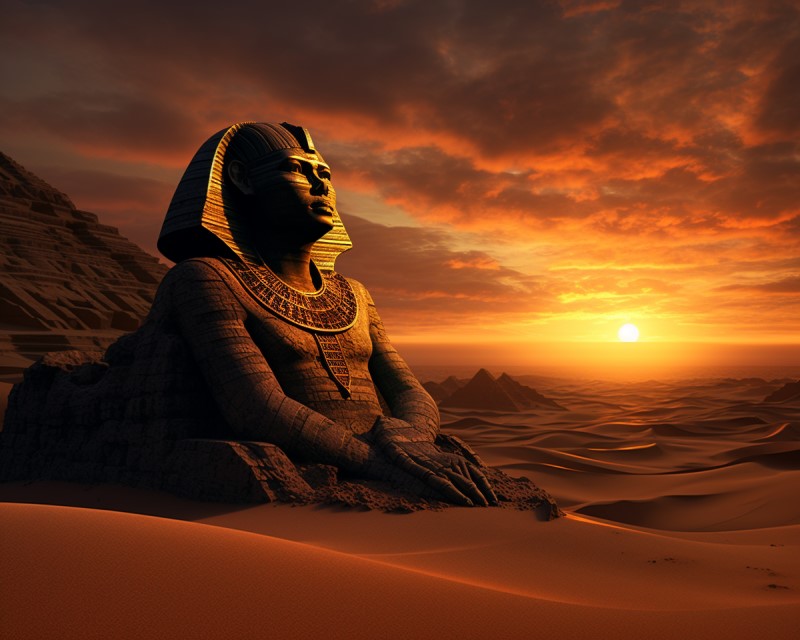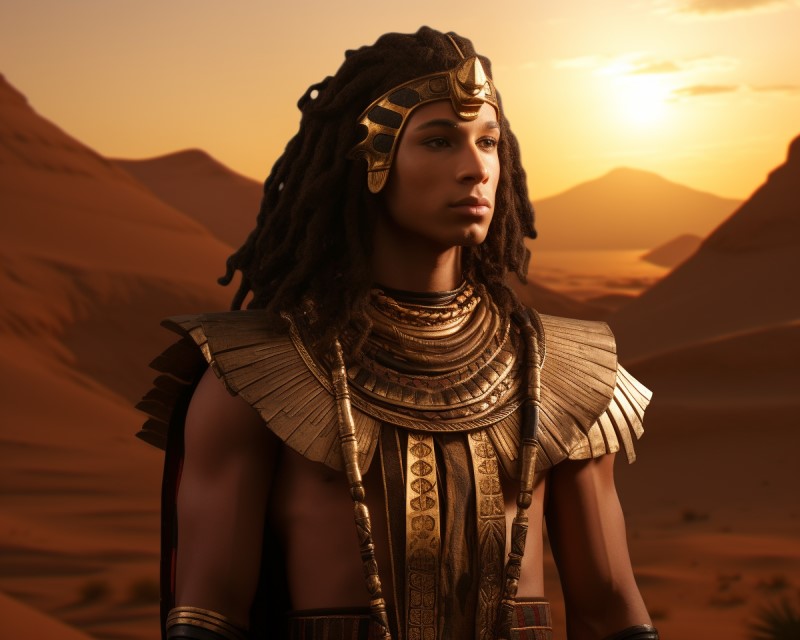KidZone Geography: Egyptian Mythology
The Legend of the Sphinx
In the land of Egypt, where the sands whisper secrets of the ancient world and the Nile flows like a ribbon of life through the vast deserts, there stood a creature of such majesty and mystery that its story would be etched into the stones of history. This is the legend of the Sphinx, a guardian of mysteries, with the body of a lion, the wings of an eagle, and the head of a woman, her gaze as piercing as the sun and her wisdom as deep as the endless sky.

The Sphinx, with her imposing presence, was said to have been placed near the Great Pyramids, on the edge of the Giza plateau, a silent sentinel watching over the vast expanses of sand and stone. Her body, carved from the bedrock of the earth, shimmered in the golden light of the sun, her form a testament to the might and ingenuity of the ancient Egyptians. Her eyes, crafted with the precision of the greatest artisans, held within them the mysteries of the ages, and her lips, though silent, spoke of untold stories and riddles of the gods.
According to legend, the Sphinx posed a riddle to all who dared approach her, a challenge that one must answer to pass. The riddle was as enigmatic as the stars that danced in the Egyptian night sky: "What walks on four legs in the morning, two legs at noon, and three legs in the evening?" Many tried to unravel the Sphinx's riddle, their hearts filled with the desire to uncover the secrets she guarded, but those who failed were met with a fate as unforgiving as the desert sun.
Then came a day when a prince named Thutmose, weary from his travels and in search of wisdom, approached the Sphinx. The desert around was a tapestry of golds and ambers, the dunes rolling like waves under the azure sky. As Thutmose stood before the Sphinx, her shadow a cool refuge from the heat, he pondered her riddle, his mind as sharp as the blade at his side.

With a heart steady and calm, Thutmose spoke his answer: "Man, who in childhood crawls on all fours, in manhood walks on two legs, and in old age walks with a cane as a third leg." The Sphinx, upon hearing the wisdom in Thutmose's words, smiled, a gesture as subtle as the shifting sands, and granted him passage, her riddle solved, her secret unveiled.
In gratitude for the prince's insight, the Sphinx offered him protection and guidance, her spirit a beacon for those who seek knowledge and truth. Under her watchful gaze, Thutmose would rise to greatness, his deeds as enduring as the stones from which the Sphinx herself was carved.
The legend of the Sphinx serves as a reminder of the power of wisdom and the importance of understanding life's deeper truths. Her riddle, a metaphor for the journey of life, from the helplessness of infancy, through the strength of adulthood, to the reliance on wisdom in old age, teaches us that the answers we seek often lie within.
And so, the Sphinx remains, a silent guardian of the desert, her story woven into the fabric of Egyptian mythology. She invites all who gaze upon her to ponder the mysteries of life, to seek the wisdom in the riddles of the world, and to remember that within every question lies the seed of understanding, waiting to be discovered under the endless Egyptian sky.